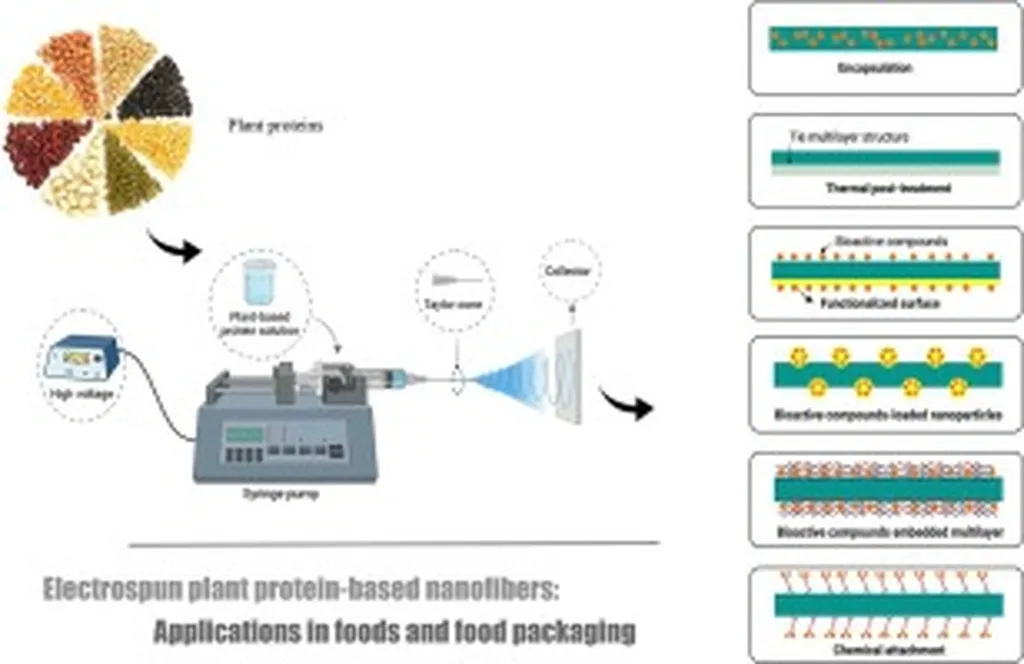In the quest for sustainable and plant-based protein sources, researchers are turning to advanced technologies to enhance their functionality and applicability. Among these technologies, electrospinning has emerged as a promising tool, offering the potential to structure plant proteins into nanofibers with tailored properties. A recent review published in *Macromolecular Materials and Engineering* (which translates to Macromolecular Materials and Engineering in English) sheds light on the principles, challenges, and recent advancements in this field, with lead author Hassan Rezaeinia from the Department of Food Nanotechnology at the Research Institute of Food Science and Technology (RIFST) in Mashhad, Iran, at the helm.
Electrospinning, a type of electrohydrodynamic (EHD) technique, involves using electric fields to draw fine fibers from a polymer solution. While this process has been successfully applied to synthetic and animal-derived polymers, plant proteins present unique challenges due to their structural complexities. “The limited solubility, low chain entanglement, and globular conformations of plant proteins hinder their direct electrospinnability,” explains Rezaeinia. To overcome these hurdles, researchers have explored various strategies, including the use of solvents to unfold protein structures, incorporation of carrier polymers to enhance molecular entanglements, and addition of surfactants to lower surface tension.
Moreover, denaturation methods such as thermal and pH treatments, as well as green technologies like high hydrostatic pressure and ultrasound, have been employed to improve fiber formation and morphology. “Synergistic approaches combining these techniques have demonstrated improved fiber formation and morphology,” notes Rezaeinia. Despite these advancements, significant challenges remain regarding the scalability, reproducibility, and mechanical performance of electrospun plant protein fibers.
The implications of this research extend beyond the food industry. In the energy sector, for instance, electrospun plant protein fibers could potentially be used in the development of sustainable and biodegradable materials for energy storage and conversion devices. As the demand for renewable energy sources continues to grow, the need for innovative and eco-friendly materials becomes increasingly pressing. This research could pave the way for the development of such materials, contributing to a more sustainable energy future.
Furthermore, the potential applications of electrospun plant protein fibers in packaging and biomedical fields are also noteworthy. In the packaging industry, these fibers could be used to create biodegradable and compostable materials, reducing the environmental impact of traditional plastic packaging. In the biomedical field, they could be employed in the development of drug delivery systems, tissue engineering scaffolds, and wound dressings.
As the research community continues to grapple with these challenges, the future of electrospinning in the context of plant proteins holds significant promise. By optimizing formulations and process parameters, researchers aim to enable large-scale production and expand the use of electrospun plant protein fibers in various industries. The review by Rezaeinia and his team serves as a comprehensive overview of the current state of the art, highlighting the progress made and the obstacles that lie ahead. As the world seeks sustainable solutions to global challenges, the insights gained from this research could prove invaluable in shaping the future of the field.

